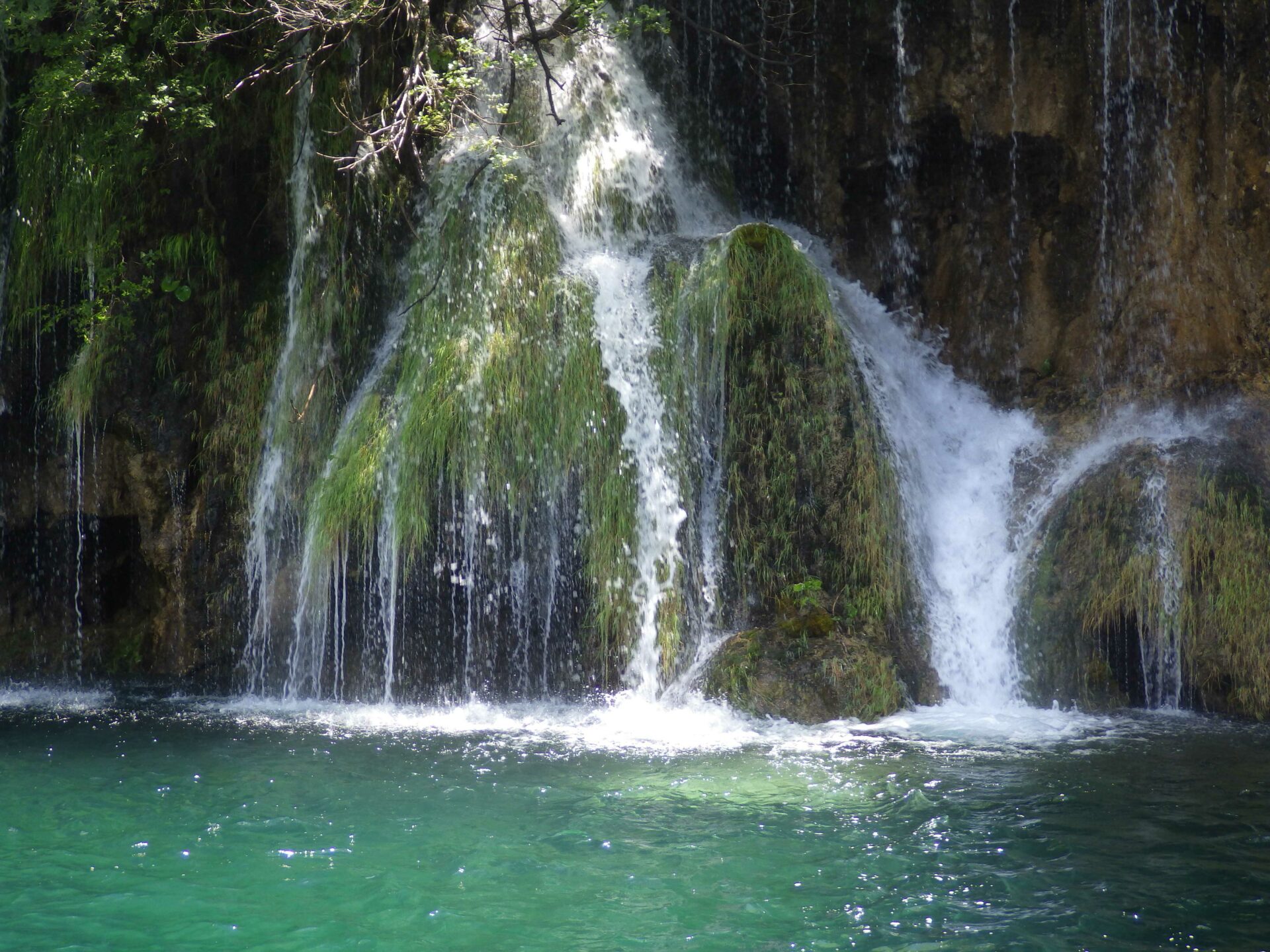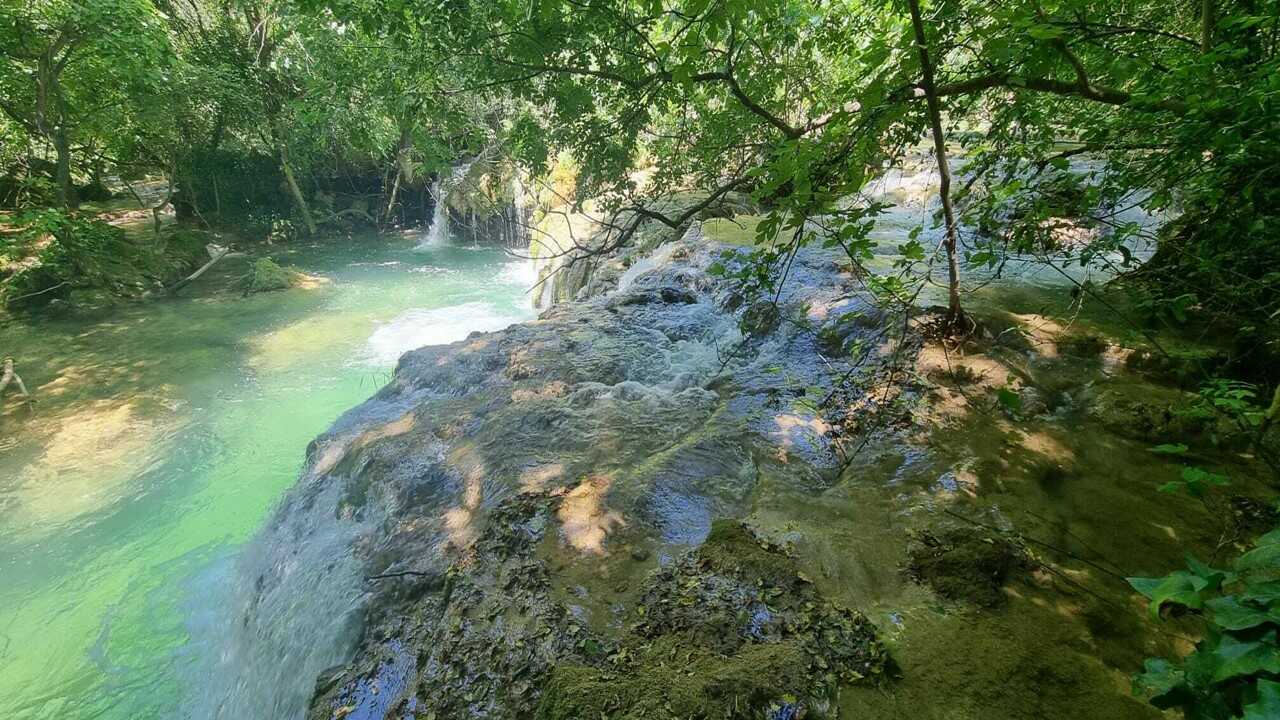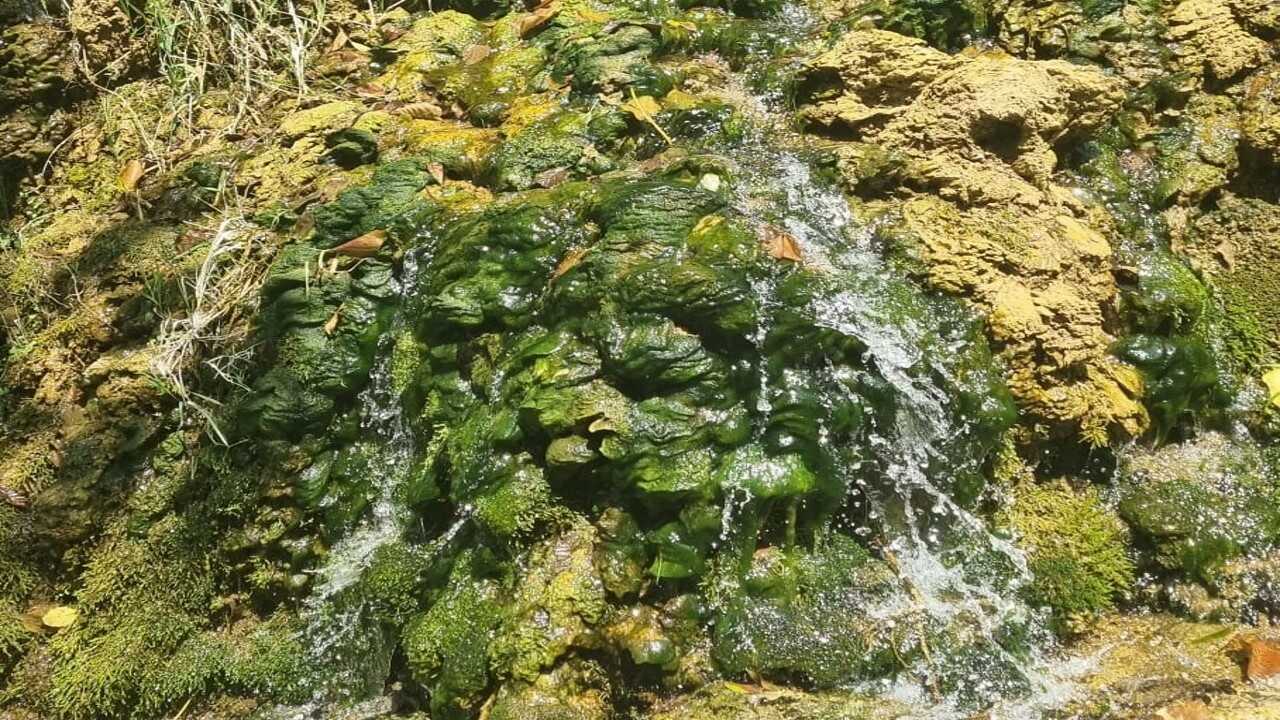Tufa Barriers – A Karst Phenomenon


Tufa barriers are a distinctive karst phenomenon that defines the national parks of Croatia, such as Plitvice Lakes and the Krka River. Although present at several freshwater locations in the mountainous and coastal regions of Croatia, tufa barriers are relatively rare on a global scale. Their formation requires a precise combination of hydrological, geological, chemical, and biological factors. A fundamental prerequisite for their formation is the solubility of karst rock, primarily composed of calcium carbonate or limestone.
As precipitation passes through the atmospheric layer, and especially through soil, it reacts with carbon dioxide, forming carbonic acid. When carbonic acid reaches a lake or river, it lowers the water’s pH and dissolves the limestone substrate, releasing calcium and carbonate ions. As water flow speed and turbulence increase, carbon dioxide escapes to the water surface and evaporates. This leads to a rise in pH and the recombination of calcium and carbonate ions into calcium carbonate or limestone. This process is known as tufa deposition.
Beyond the described hydrogeological foundation, tufa formation also depends on a substrate that facilitates the accumulation and binding of newly formed calcium carbonate. Key to this process are various plant and animal species within the freshwater ecosystem. Mosses are coated by microbial communities of bacteria and algae that secrete a sticky polysaccharide substance, which provides the perfect texture for calcium carbonate to attach and accumulate. Additionally, mosses and algae fix carbon dioxide during photosynthesis, further shifting the chemical balance towards increased pH, promoting tufa formation. Besides photosynthetic plant organisms, animal species—particularly those that build calcareous shells, such as snails—also contribute to the process. Their shells attach to the secreted biofilm of microbes and algae on moss layers, reinforcing the emerging tufa structure. It is believed that animal activity disrupts water flow and increases turbulence, which enhances carbon dioxide evaporation—a crucial step in tufa deposition.
As the tufa layer grows, it further alters water flow, creating greater irregularities in the stream and steeper slopes, which accelerate water movement and carbon dioxide evaporation. This, in turn, raises pH levels and facilitates additional carbonate crystallization. Thus, a positive feedback loop is established in tufa deposition, playing a crucial role in the formation of the spectacular waterfalls of the Krka River and Plitvice Lakes, as well as their cascading lake systems.
The sites shaped by tufa barriers are major tourist attractions, drawing visitors year-round. However, this high influx of tourists poses a threat to these fragile formations. Despite their massive structures, built over thousands of years, tufa barriers are extremely sensitive to chemical and mechanical disturbances. They are at risk due to increased organic pollution, elevated carbon dioxide levels, disruptions in biological factors, as well as ice melting, tree falls, and the subsequent breaking off of tufa fragments.
The Institute for Water “Josip Juraj Strossmayer” conducts systematic monitoring of the ecological and chemical status of measurement stations within Plitvice Lakes and the Krka River, as well as those supplying water to these national parks. The results from previous years are included in the Water Status Report and are available at the provided link.

